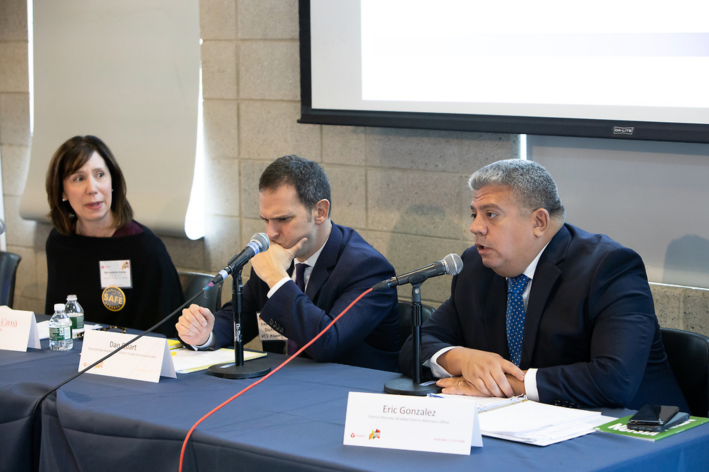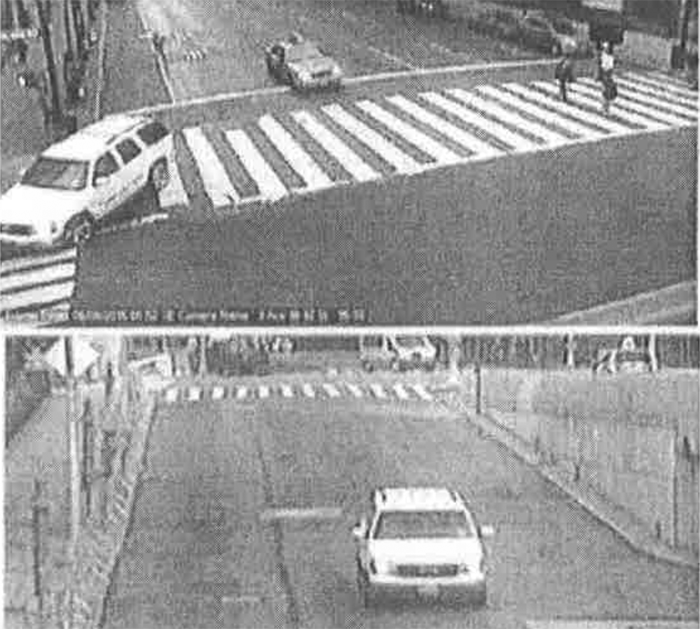Brooklyn’s top prosecutor renewed his call for higher penalties for hit-and-run drivers who maim or kill after hearing the devastating story of one woman who was seriously injured when she was run over by a hit-and-run driver three years ago in Manhattan.
At Transportation Alternatives’ annual “Vision Zero Cities” conference on Oct. 10, Brooklyn District Attorney Eric Gonzalez again demanded that lawmakers in Albany increase the jail time for hit-and-run drivers who kill, arguing that current state law only incentivizes drivers to flee — just like the one who almost killed Bernadette Karna in 2016.
Currently, a hit-and-run driver who causes serious physical injury (and is later caught) is charged with a Class E felony for leaving the scene, the lowest-level felony in New York State, which carries a maximum of four years in jail. Fleeing a crash resulting in death is a Class D felony, which carries a maximum of seven years.
But, the penalties for drunk drivers who kill are much higher — as the law stands now, drunk drivers who kill and stay at the scene face a charge of Vehicular Manslaughter or Assault in the First Degree, Class C felonies that carry a maximum of 15 years in prison. But here's the catch: Many drunk drivers flee because by the time cops catch them (if they catch up with them, that is), there will be no way to prove they had alcohol in their system at the time of the crash. As a result, cops can no longer arrest them for the higher charge of a fatal DWI, leaving only the lesser leaving-the-scene charge.
The difference in the charges creates a loophole that encourages fleeing, said Gonzalez.
“It should be penalized much more severely than it is with a much higher jail time. It’s a very low-level felony, no jail necessitated with these cases, so it actually makes more sense to flee,” said Gonzalez. “As long as that is part of the equation, we’re gonna continue to have these.”
@BrooklynDA - what happened to Bernadette isn’t acceptable. Need to go after hit-and-runs. Intoxicated drivers are incentivized to flee b/c they won’t face consequences. Leaving scene needs to be a much higher felony. Now, low level & no jail, so makes more sense to flee.
— Blythe Austin (@bblytherss) October 10, 2019
Gonzalez first made the pitch in 2017 when he stood with longtime Brooklyn Assembly Member Joe Lentol to call on the state legislature to finally pass a bill, known as the Hit-and-Run Prevention Act, which would increase the penalties for hit-and-run drivers who kill, to make them on par with fatal DWIs.

"We've incentivized it a little, by the way it [criminal law] operates, that sometimes if a person is intoxicated and gets involved in a collision or crash they are incentivized to leave because they face much more severe repercussions than if they stayed,” he said.
But the stalled Hit-and-Run Prevention Act, which also includes a public education campaign for drivers to understand the importance of staying at the scene of a collision, never made it out of committee. Lentol said the legislature is often "not anxious" to pass new laws that would raise penalties.
In Karna's case, Manhattan detectives never found the person who nearly killed her, making Karna one of the thousands of victims who have not received justice. Last year, out of the 5,699 hit-and-run crashes involving injury last year, only 492 people were arrested — a rate of less than 9 percent. The stats are better when victims are killed or put in critical condition — from June 2018 through June 2019, cops arrested 30 hit-and-run drivers who had killed or critically injured 51 people.
But an appalling number of hit-and-run drivers are also escaping punishment because an arrest doesn’t automatically translate to a conviction. As Streetsblog has reported, prosecutors and judges have long interpreted New York State's VTL 600 statute to only allow charges to be brought against a driver for fleeing the scene if he or she leaves “knowing, or having cause to know, that” he or she injured someone else.
Many drivers avoid charges in fatal hit-and-run collisions almost entirely by simply claiming they “didn’t know” they had hit someone — like the driver who initially fled after hitting and killing 20-year-old Robyn Hightman in June.
But it’s not just safe-street advocates and the families of hit-and-run victims that have long questioned how so many killer drivers seem to get off scot-free, Gonzalez also seemed perplexed by the inadequate justice when offering up a personal anecdote about a hit-and-run.
In response to Karna’s life-altering trauma story, Gonzalez explained his own frustrations with how a driver just took off without consequence after causing thousands of dollars in damage to his car that he had parked on the street. The driver must have been traveling at an unsafe rate of speed to cause that much destruction to an inanimate object, he said.
“The person who was clearly driving at such a high rate of speed to put $10,000 worth of damage. At that level, driving that dangerously, it was not investigated,” Gonzalez said. “One of the things we have to do is obviously change the law to make it much more effective in holding these folks accountable.”
So it’s unclear why the prosecutor doesn’t apply the same logic to cases where a driver is undoubtedly going fast enough to kill someone, and then flees the scene. There are many drivers, both those who flee and stay at the scene, that Gonzalez has failed to bring charges against, like the ones who were going fast enough to kill 25-year-old Aurilla Lawrence, 27-year-old Neftaly Ramirez, 33-year-old Luis Garcia, and 67-year-old Linda Douglas.






